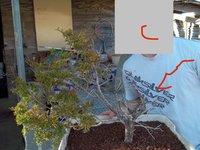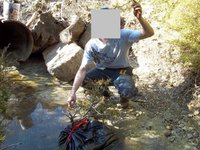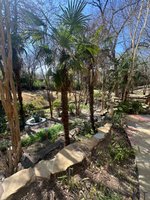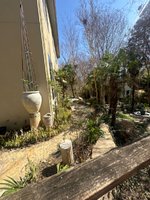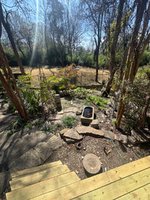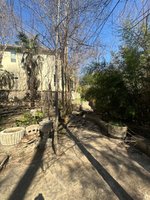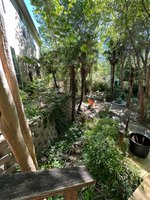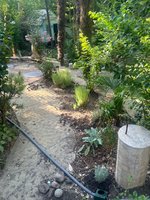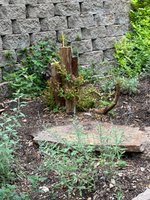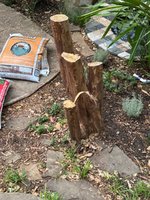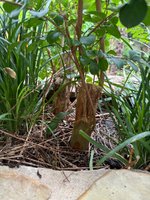Living Tribunal
Yamadori
I started creating bonsai when I was 16, quickly getting the bug and joining my local bonsai society. After a few years, my interest ceased when my dad threw away ~50 pre-bonsai “stumps” from his backyard when I lived there after college. I have only created and maintained a handful of trees since that time.
Fast forward to today, we just purchased a half acre lot in Texas that is best case scenario every bonsai enthusiasts wildest dream. The property is a very dynamic landscape of which the original home builders planted 194 trees, without any intention of pruning them.
We now own this home 15 years later and it’s wildly overgrown with hundreds of rare/nice ornamentals such as crape myrtles, ancient rose bushes, prune, peach, juniper, cedar, barberry, Japanese maples, laurel, holly, Chinese pistache, wax Myrtle, Chinese magnolias, Japanese quince, viburnums, hawthorns, (hoards) nandina, privet, and straight up never disturbed Texas native species such as hackberry, pecan, elm, maple, ash, etc.
The property was so overgrown that I discovered we have a massive stone front porch that wasn’t included in the latest blue prints.
I have a thing against killing trees but do want to prevent them from smothering each other, clean up my landscape, and allow in more sun. As such, I will be creating bonsais from several hundred high quality prebonsai material to not only get back into the hobby but also clean up and clear my landscape.
This post will serve as the long term progression repository. This will 1000% take several years and I may even have to rope in local bonsai enthusiasts to help me out.
I’ve attached some initial photos to give yall an idea and will elaborate on specific areas in subsequent posts today.
Fast forward to today, we just purchased a half acre lot in Texas that is best case scenario every bonsai enthusiasts wildest dream. The property is a very dynamic landscape of which the original home builders planted 194 trees, without any intention of pruning them.
We now own this home 15 years later and it’s wildly overgrown with hundreds of rare/nice ornamentals such as crape myrtles, ancient rose bushes, prune, peach, juniper, cedar, barberry, Japanese maples, laurel, holly, Chinese pistache, wax Myrtle, Chinese magnolias, Japanese quince, viburnums, hawthorns, (hoards) nandina, privet, and straight up never disturbed Texas native species such as hackberry, pecan, elm, maple, ash, etc.
The property was so overgrown that I discovered we have a massive stone front porch that wasn’t included in the latest blue prints.
I have a thing against killing trees but do want to prevent them from smothering each other, clean up my landscape, and allow in more sun. As such, I will be creating bonsais from several hundred high quality prebonsai material to not only get back into the hobby but also clean up and clear my landscape.
This post will serve as the long term progression repository. This will 1000% take several years and I may even have to rope in local bonsai enthusiasts to help me out.
I’ve attached some initial photos to give yall an idea and will elaborate on specific areas in subsequent posts today.
Attachments
-
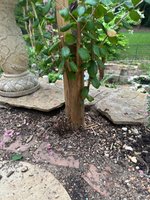 IMG_3082.jpeg550.1 KB · Views: 212
IMG_3082.jpeg550.1 KB · Views: 212 -
 IMG_3175.jpeg600.8 KB · Views: 165
IMG_3175.jpeg600.8 KB · Views: 165 -
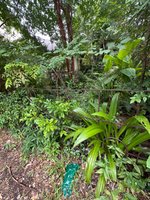 IMG_3167.jpeg668.7 KB · Views: 137
IMG_3167.jpeg668.7 KB · Views: 137 -
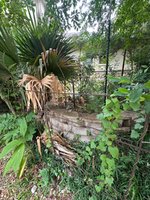 IMG_3169.jpeg632.2 KB · Views: 131
IMG_3169.jpeg632.2 KB · Views: 131 -
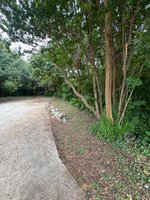 IMG_3164.jpeg652.8 KB · Views: 126
IMG_3164.jpeg652.8 KB · Views: 126 -
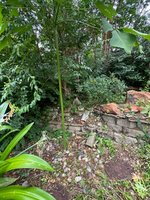 IMG_3153.jpeg673.3 KB · Views: 125
IMG_3153.jpeg673.3 KB · Views: 125 -
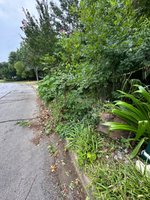 IMG_3152.jpeg646 KB · Views: 121
IMG_3152.jpeg646 KB · Views: 121 -
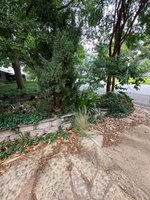 IMG_3139.jpeg631.8 KB · Views: 120
IMG_3139.jpeg631.8 KB · Views: 120 -
 IMG_3128.jpeg625.5 KB · Views: 121
IMG_3128.jpeg625.5 KB · Views: 121 -
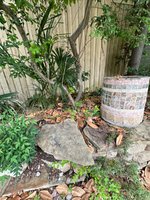 IMG_3130.jpeg587 KB · Views: 115
IMG_3130.jpeg587 KB · Views: 115 -
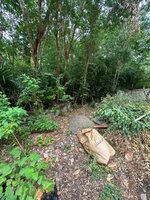 IMG_3143.jpeg694.6 KB · Views: 114
IMG_3143.jpeg694.6 KB · Views: 114 -
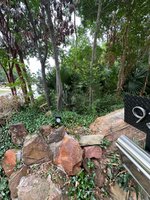 IMG_3140.jpeg633.5 KB · Views: 98
IMG_3140.jpeg633.5 KB · Views: 98 -
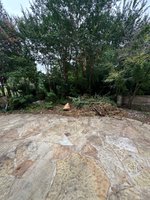 IMG_3133.jpeg589.4 KB · Views: 96
IMG_3133.jpeg589.4 KB · Views: 96 -
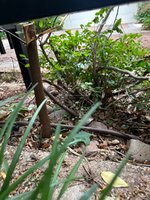 IMG_3113.jpeg500.7 KB · Views: 97
IMG_3113.jpeg500.7 KB · Views: 97 -
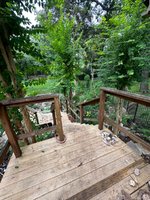 IMG_3085.jpeg596.7 KB · Views: 106
IMG_3085.jpeg596.7 KB · Views: 106 -
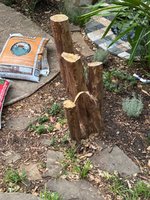 IMG_3092.jpeg615.8 KB · Views: 127
IMG_3092.jpeg615.8 KB · Views: 127



